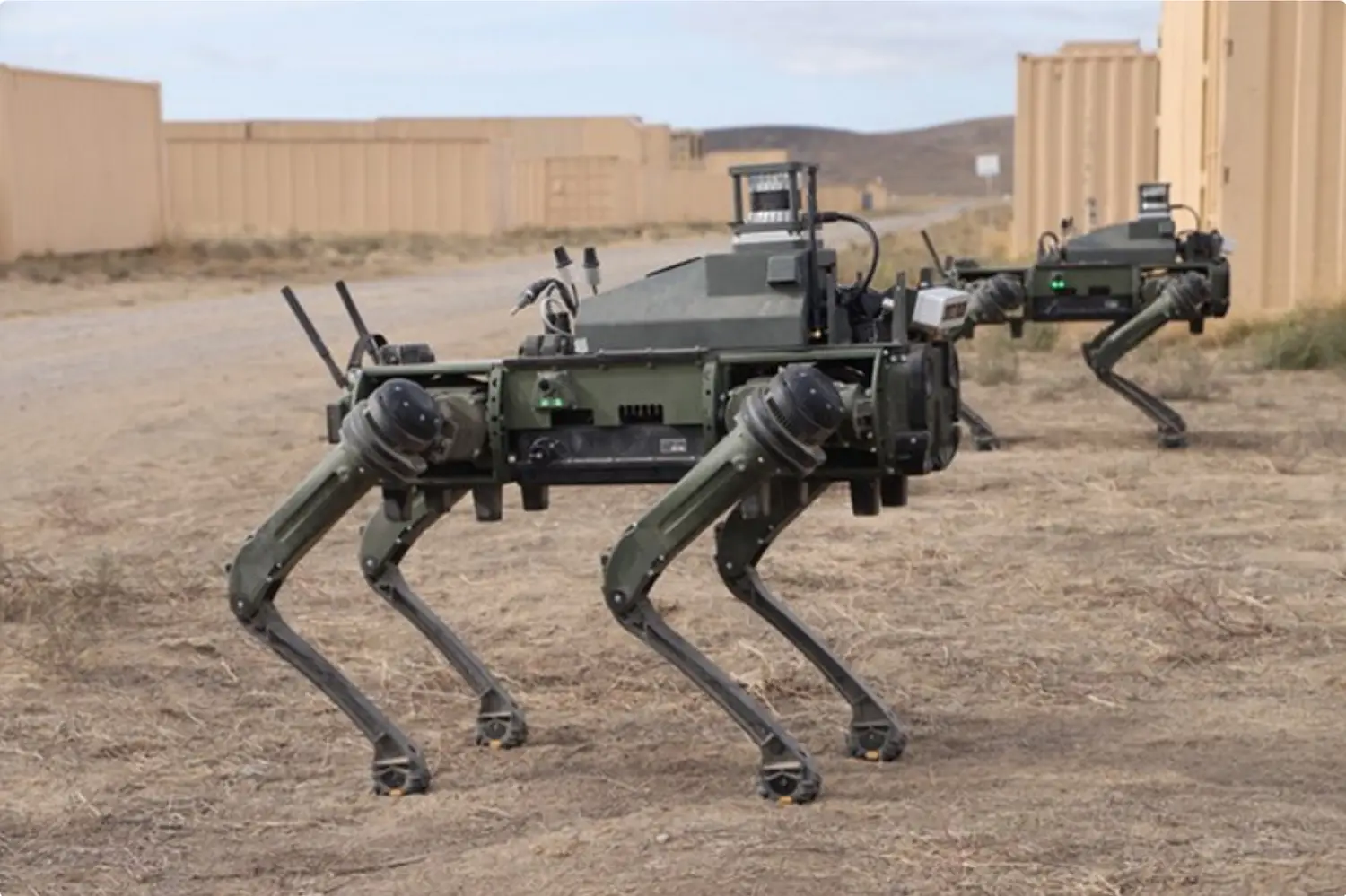
REPORT HOME > News
October 2023 | technology report | Military Training
by Giles Ebbutt
Hadean, ST Engineering Antycip and Cervus have announced a contract from the British Army for their Forge decision support tool for use at the Land Warfare Centre in a series of major experiments.
Above: One application for Forge's simulation capability will be to develop operational doctrine for the Challenger 3 tank. (Photo: UK MoD/Crown Copyright)
A consortium of UK small and medium-sized companies has been awarded a four-year contract to develop a specific version of its Forge decision support tool for the British Army’s Land Warfare Centre (LWC)
The group consists of Hadean, which provides its scalable computing platform; ST Engineering Antycip which offers its VR Forces entity-level constructive simulation; and data analytic specialist Cervus with is HIVE analysis tool.
Speaking at DSEI, Alan Roan, Cervus' managing director, said the contract will support the LWC’s experimentation programme. He explained that there are three parts to an experiment – scoping, execution and analysis – and that the consortium would be involved in all three.
RELATED ARTICLES
ST Engineering Antycip and Nova Systems to accelerate RAF synthetic training
Microsoft expands military training footprint with wider Hadean tie-up at I/ITSEC 2022
DSEI 2023: Number of bidders continues to grow for British Army CTTP training contract
He added that the using Forge would significantly improve the time taken to run an experiment, suggesting this could be reduced from six months to one week. 'The idea is to fail fast and fail early.' he said.
This improvement in speed is achieved through connecting the VR Forces simulation to Hadean’s platform, which enables 400 simultaneous simulation runs rather than one. Roan said this thus provided a much-increased and therefore more valuable data set for analysis by HIVE.
He said that the main use for Forge will be to develop tactical doctrine for the army, particularly for three new platforms coming into service: Challenger 3, Boxer and Ajax. The tool will be able to simulate different tactical possibilities through many iterations, analyse the results and then produce doctrine based on this.
Other options for Forge could include looking at the effect and employment of other platforms and variants. Roan used the example of a turreted Boxer which is not a planned acquisition for the British Army at present, 'but should this be contemplated, using Forge could help to establish whether procuring one would be useful' Roan said.
He added that the first experiment will be to look at doctrine for the armoured brigade combat team. The contract is based on four major experiments per year, although Roan said there was capacity for more if required.
He noted that Forge could be used for course of action analysis to support mission planning, and also that some platform manufacturers were interested in using it to inform system development.
Next article below > Singapore Army experiments with robot dog teaming at Exercise Forging Sabre
October 2023 | technology report | Military Training
by Chen Chuanren
The Singapore Army is testing robotic dogs and UAVs for urban operations on exercise in the US.
Above: ASBM-1 satellite enters thermal vacuum environmental testing at Northrop Grumman’s satellite manufacturing facility. (Photo: Northrop Grumman)
The Singapore Army is currently experimenting with autonomous teaming of legged robots, more commonly known as robodogs, and UAVs for urban operations.
The project is fruition of an MoU signed by the Defence Science and Technology Agency (DSTA) and Ghost Robotics in 2021.
Three Ghost Vision 60 robots were taken to Exercise Forging Sabre in the US, with DSTA having developed autonomous algorithms and sensors. Shephard witnessed the simultaneous autonomous searching and acquisition of targets by two Vision 60 robots in two shipping containers.
RELATED ARTICLES
USAF supports testing of AI and robotic dogs
Singapore Army tests AI in tactical and command post C2 systems
Using mounted LiDAR sensors and cameras, the robots mapped out the interior of the spaces and, using computer vision, picked up concealed targets.
‘Our unmanned systems offer us a viable solution for complex terrain such as buildings, carparks and shopping malls,’ said Cpt Loy Yong Wei of the army’s Sense and Strike Acceleration Centre.
Bryan Ng, DSTA Head of Capability Development (Unmanned Ground Vehicles), said the project is now in the acceleration stage, where rapid advancements and improvements are being made on the project at Forging Sabre.
Under air-land teaming experimentation, two robodogs are linked to the Robotic C3 (RC3) system along with three Amafi Parrot UAVs, allowing the operator to control these platforms with a single console. These Parrots are already part of the army’s development in areas of swarm UAV surveillance, these using the same RC3 system.
One robodog was seen with a mounted Parrot, which Ng said can be used to bring the UAVs closer to an area of interest. The idea was conceived at the exercise, and a mount was created on site with rapid prototyping using a 3D printer.
Ng added that other sensors that could be mounted, including high-resolution cameras to spot targets from afar, and studies are under way to ruggedise robodogs for the battlefield.

